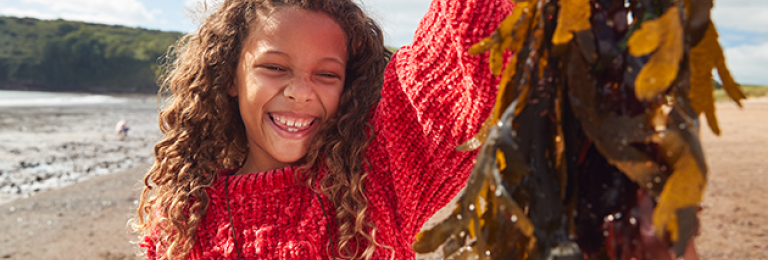Learning about Seaweed
Food literacy for young children involves understanding where our food comes from. Edible seaweed has been an important source of food for many indigenous and marine communities here in BC for thousands of years, as well as being eaten in other countries with ocean borders like Japan and Korea.
What is seaweed?
Edible seaweed, sometimes also called sea vegetables, are a variety of aquatic plants that grow in the ocean. Red Laver or Algae, Giant Kelp and Dulse are the names of some of them. They are harvested by indigenous communities by traveling out to seaweed beds as well as being commercially grown in saltwater tanks or on ropes in ocean plots and sold in grocery stores around the world.
Why is seaweed important?
For many coastal indigenous communities in BC, edible seaweed provides important nutrients. It may be prepared into a soup, or dried and roasted for storage and sharing. Red Laver or Algae is also flattened into dried sheets called nori that is commonly used in rolled or maki sushi.
Here are some activity ideas for learning about seaweed:
● Eat seaweed. Commercially dried seaweed (e.g. dulse or nori) is available for purchase at many grocery stores. Try making Seaweed Soup or adding crushed or very thinly sliced seaweed to cooked rice. Childcare facilities with 8+ children should check with their Licensing Officer about what is needed to serve food.
● Learn from an expert or elder. Invite a person to speak to the children who is familiar with harvesting seaweed or who may share traditional cultural knowledge about seaweed. It’s helpful to share photos and samples of seaweed.
● Visit the beach at an ocean, lake or river. Coastal areas are abundant with all types of seaweed that gets washed up on the sand and it can be fun for children to play with some. This is not the time to eat seaweed though! Please remember to leave the seaweed at the beach—there are regulations for harvesting seaweed in BC.
● Play seaweed tag. Find a long piece of seaweed like kelp (or use a rope to pretend). The person holding the kelp is “it” and tries to catch someone. Make it more challenging by changing how the children have to move (e.g. hopping, skipping, walking backward).
● Arts & crafts. Make a beautiful beach landscape on a piece of cardboard by using paint to create the sea then gluing on sand, seaweed and small shells.
For more resources
BC’s First Nations Health Authority has fact sheets about seaweed and many other traditional foods:
Traditional Food Fact Sheet
